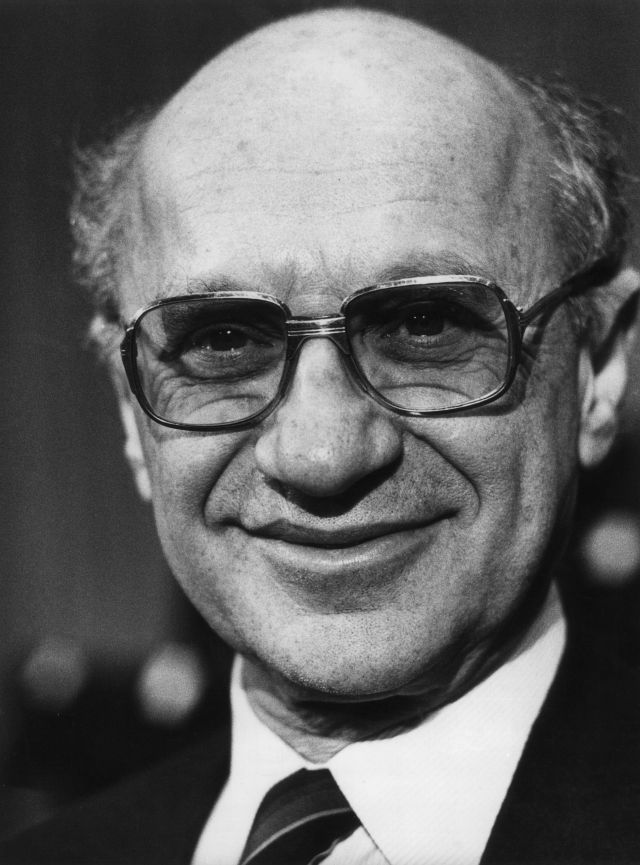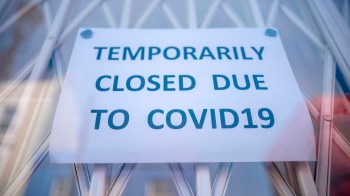
When economists changed the world

The following is an excerpt from Binyamin Appelbaum’s new book “The Economists’ Hour: False Prophets, Free Markets, and the Fracture of Society.” It looks at the outsized role that economists came to play in shaping public policy in America. Click the audio player above to hear Appelbaum’s interview with Kai Ryssdal.
Among the economists who played a leading role in ending the draft, Martin Anderson was the only who had served in the military: he enrolled in the ROTC program at Dartmouth College and then spent 1958–1959 as a second lieutenant in army intelligence. After returning to academia, he earned a doctorate in economics at MIT and joined the faculty at Columbia’s business school, where he taught finance. Anderson, quick-witted and gregarious, had a contrarian bent. In 1964, he published The Federal Bulldozer, which called for the end of urban renewal projects, then widely regarded as the epitome of progressive urban policy. Anderson argued the government was destroying far more housing than it was creating, and he mocked the premise that poor families were finding better housing. If such housing existed, he wrote, “wouldn’t it be far simpler and much cheaper to advise people of these attractive bargains without going to all the trouble of tearing their homes down?” Anderson liked jabbing the establishment in person, too. That fall, Anderson and his future wife, Annelise, campaigned door-to-door for Goldwater on the Upper West Side of Manhattan.

Milton Friedman arrived at Columbia that same autumn to spend a year as a visiting professor, and Anderson cultivated a relationship. One night at Friedman’s apartment, they started arguing around 11:00 p.m.; three hours later, Anderson said he was too tired to continue. “All right,” Friedman responded with a big smile. “I win.” Anderson also joined the loose circle of libertarians that revolved around the novelist Ayn Rand. The group included a flashy economist named Alan Greenspan who had gone into business rather than academia and therefore had a posh apartment and a blue Cadillac Eldorado convertible.
In the spring of 1967, Anderson read a printed version of the arguments Friedman and [economist Walter] Oi had made against conscription at the Chicago conference and raised the idea with Nixon’s advisers. He then recruited Greenspan to help him draft a memo for Nixon. The two men delivered a seven-page version in April and a thirty-page version by the Fourth of July. They began by asserting that no one liked conscription. “It has been tolerated reluctantly,” they wrote, “only because it has been thought to be absolutely necessary to preserve and protect the national security of the United States.” The memo then described Oi’s work: the effective tax imposed on conscripts, and the relatively modest cost of recruiting volunteers instead. Anderson and Greenspan concluded: “Because it is moral and fair, because it increases our national security, and because it is economically feasible, we should give high priority to the goal of establishing an all-volunteer armed force with fair, decent wages that will offer the young men of our country the opportunity to participate in its defense with dignity, with honor and as free men.”
Thus the elimination of the draft and the introduction of a volunteer Army in January 1973 were also major steps to meaningful economic freedom.
Richard Nixon
Nixon described the memo as “very interesting,” and circulated copies among his advisers. Some liked the idea; others responded with alarm, warning that Nixon would anger conservative voters. That concern was heightened in late September 1967, when 320 prominent liberals — including the Nobel laureate Linus Pauling, the poet Robert Lowell, and Dr. Benjamin Spock, the author of the era’s bible of baby care — signed “A Call to Resist Illegitimate Authority” in support of men who refused to serve in the military. Then, in mid-October, came a week of nationwide antidraft protests culminating in a march on Washington. Patrick Buchanan, a top Nixon adviser, warned his boss that endorsing an end to the draft was tantamount to siding with the protesters. He wrote, “Will it be said that RN is giving these guys the means to avoid service?” Across the bottom of the memo, Nixon scrawled, “Ike thinks so.” Notwithstanding Dwight Eisenhower’s reservations, Nixon decided to take the plunge. At the University of Wisconsin on November 17, 1967, a student asked about the draft. Nixon responded by calling for “an entirely new approach” to recruitment. The nation, he said, must “move toward a volunteer army by compensating those who go into the military on a basis comparable to those in civilian careers.” There was an important caveat: he said he would end the draft only after he ended the war in Vietnam.

Still, it was a risky stand for Nixon to take. Congress had just voted to reauthorize the draft, and conscription remained popular with the general public. Opinion polls wouldn’t swing in favor of Nixon’s position for another three years. In his 1978 memoirs, Nixon portrayed the decision as rooted in economic ideology. “When I came into office, one of the severest and most unfair restraints on the free market was the military draft, which is a way of compelling service from everyone rather than hiring service from those who supply it voluntarily,” he wrote. “Thus the elimination of the draft and the introduction of a volunteer Army in January 1973 were also major steps to meaningful economic freedom.” In August 1968, when the Republican Party nominated Nixon as its presidential candidate, ending the draft became a plank in the party’s campaign platform. Hubert Humphrey, the Democratic nominee, denounced the idea as “highly irresponsible,” echoing the language Eisenhower had used in 1956 and Johnson had used in 1964. Humphrey said the cost was prohibitive; Nixon was teasing young Americans with “vain hopes.” Nixon responded by giving a national radio address declaring even more forcefully that he intended to end the draft. “This is my belief,” Nixon said on October 17, 1968, “once our involvement in the Vietnam War is behind us, we move toward an all-volunteer armed force.” Three weeks later, Nixon was elected the thirty-seventh president of the United States.
“The Economists’ Hour” by Binyamin Appelbaum. Copyright © 2019 by Binyamin Appelbaum. Excerpted with permission by Little, Brown and Company, a division of Hachette Book Group.
There’s a lot happening in the world. Through it all, Marketplace is here for you.
You rely on Marketplace to break down the world’s events and tell you how it affects you in a fact-based, approachable way. We rely on your financial support to keep making that possible.
Your donation today powers the independent journalism that you rely on. For just $5/month, you can help sustain Marketplace so we can keep reporting on the things that matter to you.


















